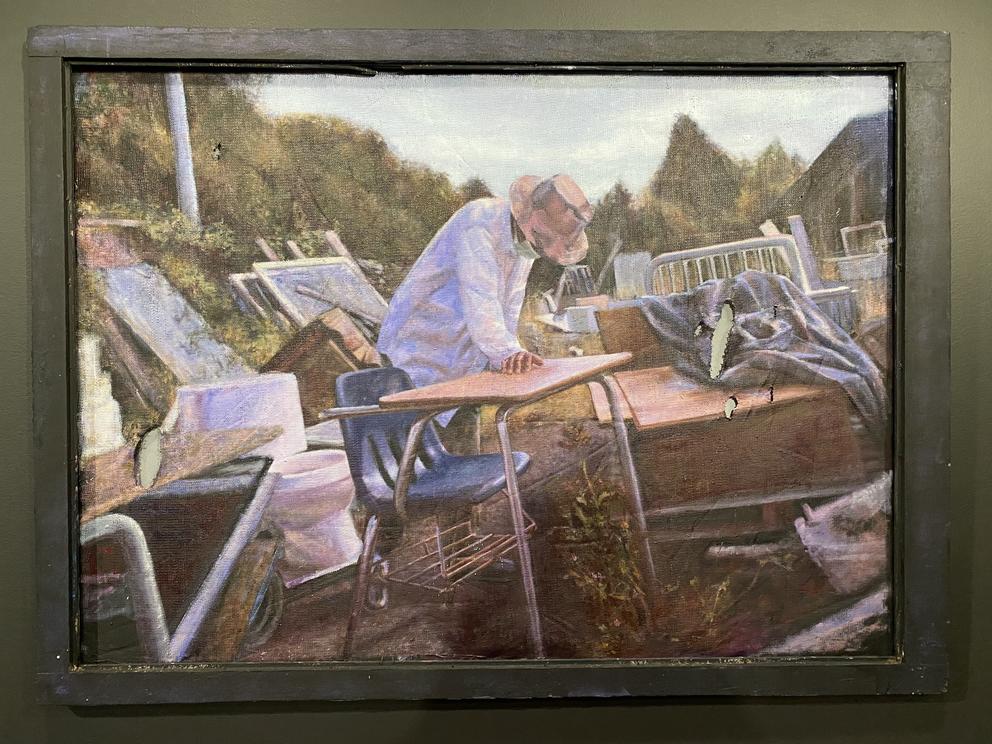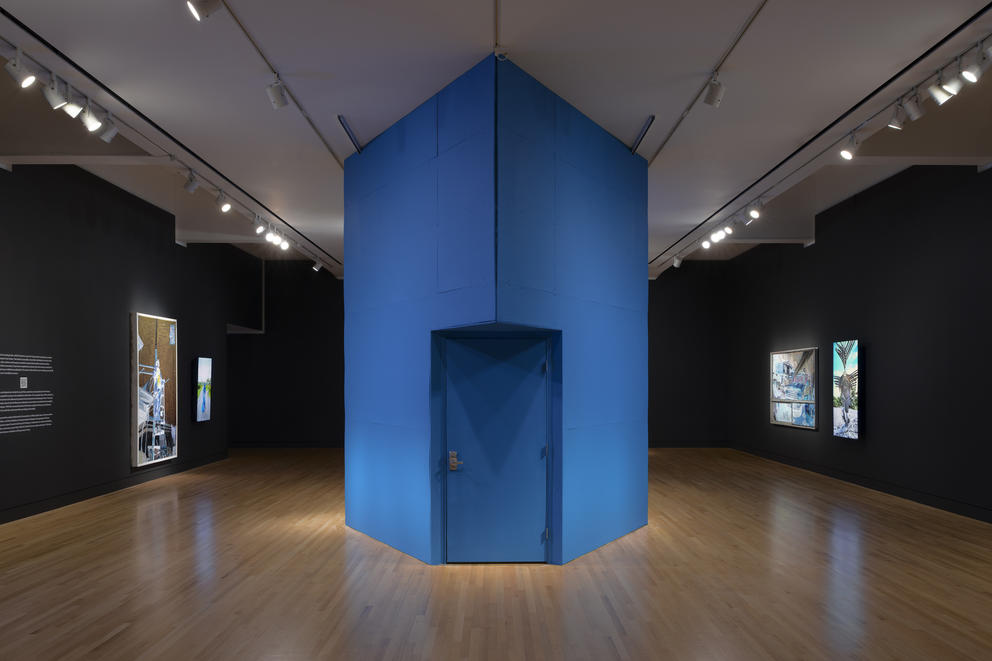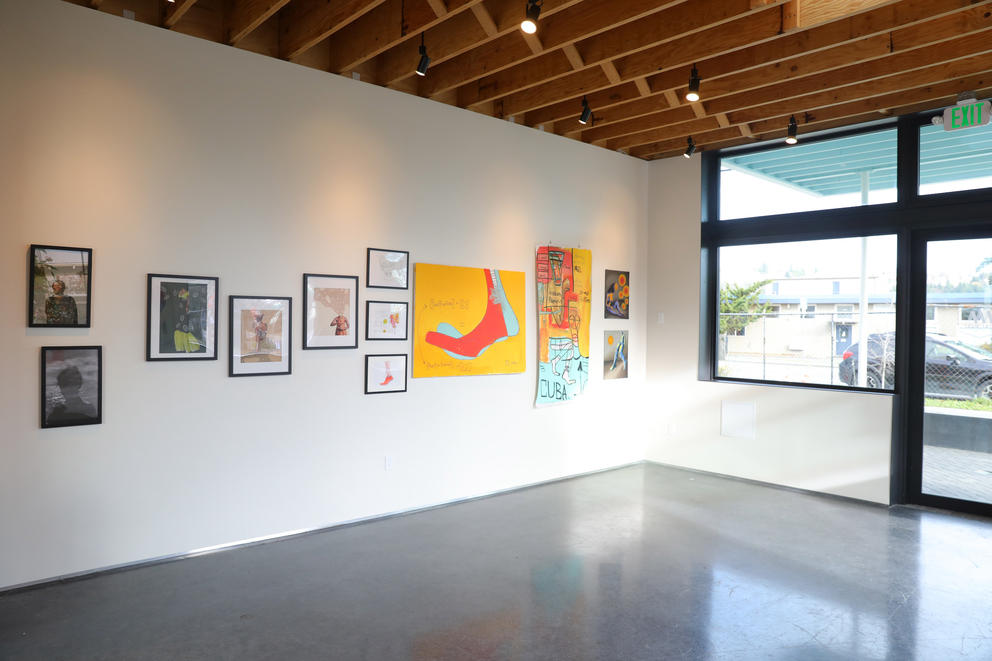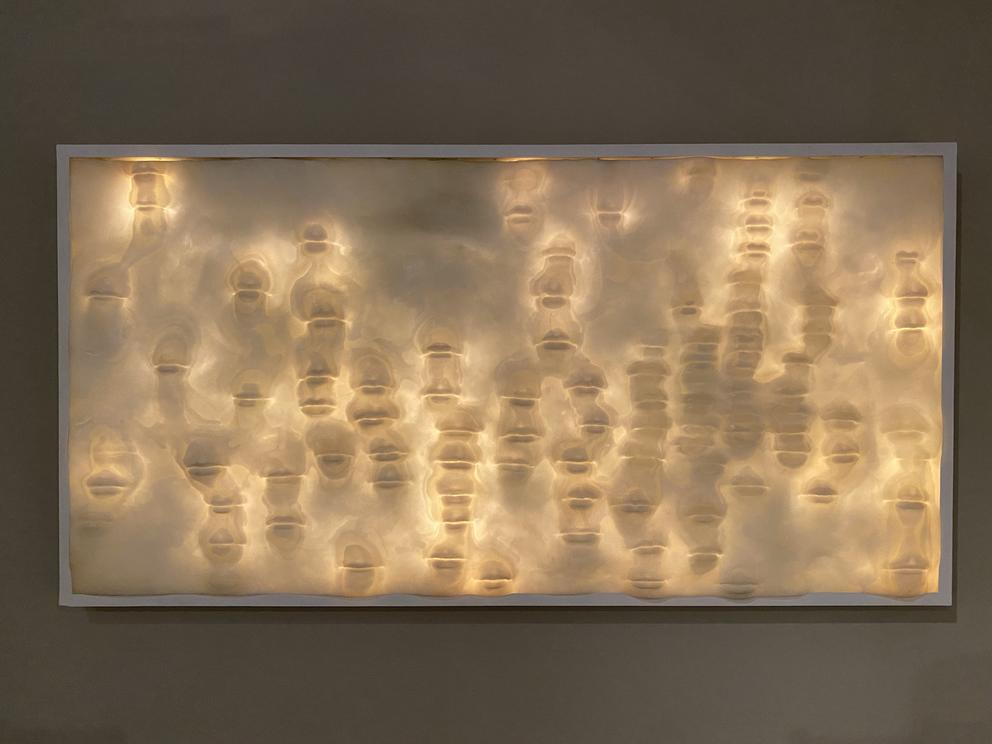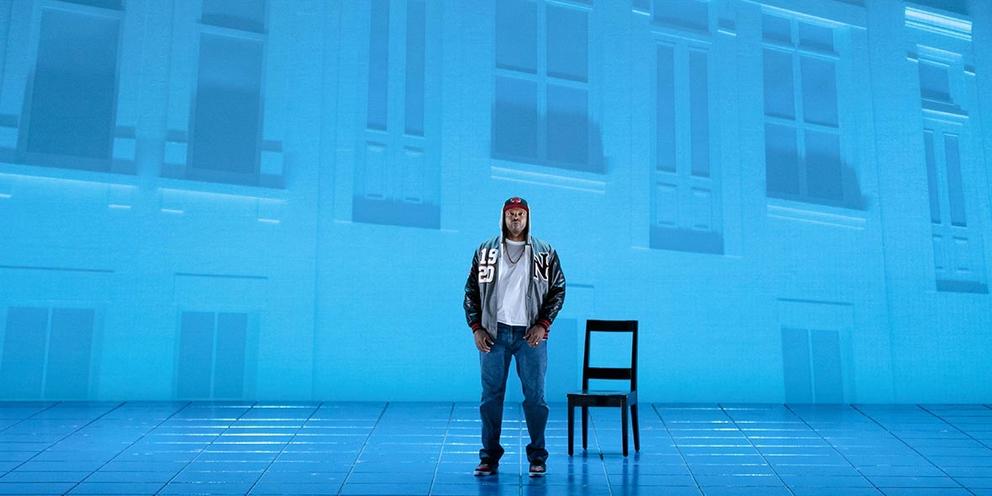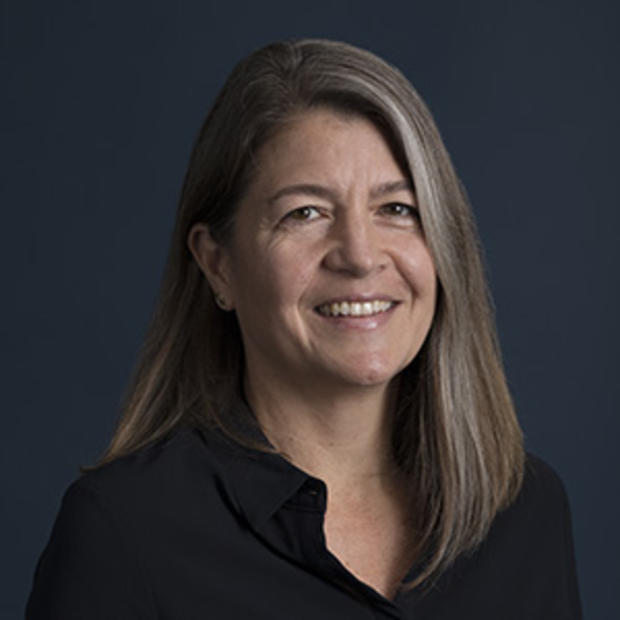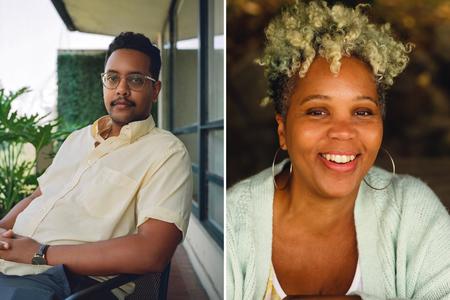Step closer and you realize the painting itself is on an old window, the tight grid of the screen imbuing it with a pointillist haze. Ruptures emerge — rips in the screen — and suddenly something clicks. The painting you’re looking at may well have started as one of the stacked windows it depicts. We’re through the looking glass.
ArtSEA: Notes on Northwest Culture is Crosscut’s weekly arts & culture newsletter.
Jordan, who also created the crisscrossed tower of speakers for the AIDS Memorial Pathway on Capitol Hill, says his artworks are time capsules “for displaced folks to hold, bury, connect and reintegrate our stories.” The new series of paintings in In the Interim: Ritual Ground for a Future Black Archive (through May 15) brings this idea home — his canvases are boarded window frames salvaged from houses and businesses in Tacoma’s historically Black neighborhoods. Through these rough and repurposed windows, we glimpse everyday moments and whole histories.
He’s also making his metaphor literal. In the second room of the show stands an imposing, angular, blue booth. The door is locked, but members of the Black community are invited to step inside (with an online reservation) and make an audio/video recording of hopes and predictions for the future. The recordings will be encrypted, and the digital key will be buried on the grounds of the Frye in 2023, to be opened in 100 years: Black history of the future.
This speculative time capsule gives the exhibit — which also features intriguing photographs of ritualistic carnival archetypes by Trinidad and Tobago artist Arnaldo James — an immensity beyond the physical walls, across time and space.
It’s a refutation of traditional museum confines, as is the plaque Jordan placed next to his painting “Untitled (Precipice)”: “You are invited to touch this artwork.” I read the message, looked at the tall wash of textured blue strokes, read the plaque again, looked around for the Frye’s notoriously vigilant security guards, then gingerly touched a couple fingers to the painted screen. Palpably, it felt something like tree bark. Psychologically, touching a painting on a wall in a 70-year-old museum felt transgressive and thrilling. It left me grateful for Jordan’s generous invitation to step across the precipice.
Also at the Frye is an expansive survey of paintings by Los Angeles artist Christina Quarles (through June 5). You can’t touch any of these, but the vibrant collection still offers a bodily experience. Quarles paints and digitally renders imagined scenes of intimacy, grief, joy and anxiety, using abstracted human forms that are close enough to be recognizable, yet off enough to be unsettling. There’s a whiff of Francis Bacon here (though the vibe is more playful than horrific), as the ambiguous bodies reach and yearn for each other on canvas.
Quarles pays particular attention to the stretch and curl of her figures’ feet, which reminded me of a small group show in the newly opened Mini Mart City Park in Georgetown. My introduction to the space happened some 15 years ago, when I was teaching a class at Seattle Community College with artist John Sutton. At that point, he and the two other members of his artistic trio, Ben Beres and Zac Culler, of SuttonBeresCuller, were just securing an old, abandoned gas station they aimed to turn into a community arts space.
After a multitude of delays (the site was a toxic brownfield), the airy building is now open, with an inaugural show guest curated by Crosscut contributor Jasmine Jamillah Mahmoud. After the Quiet: On Black Figures and Folds (open Saturdays through March 5) features work by emerging Black artists. Included in the mix is Xavier Kelley, a young athlete and artist whose abstract paintings emphasize the springy propensity of feet. If you visit Mini Mart, be sure to check out the roof deck, which offers a clear view to another architectural relic being recycled into an arts space: the Georgetown Steam Plant.
And for one more take on the body electric, head to the Lightcatcher Building, part of the Whatcom Museum in Bellingham, for the final weekend of the terrific show Up Close and Personal: The Body in Contemporary Art (through Feb. 27). Curated by Amy Chaloupka, from the collection of Driek and Michael Zirinsky, the show is an astonishingly rich mix, featuring work by some 60 artists, including Northwest art superstars Roger Shimomura, Akio Takamori and John Grade, the last of whose towers of cast rubber lips appear to shift from glacial formations to spinal X-rays to mouths clamped shut in protest.
As the geopolitical landscape roils, I’ll continue fiddling in the form of a few musical notes …
• Lin-Manuel Miranda fans have two new reasons to sing. Rise Up: The Music of Hamilton and Broadway (at The Triple Door, Feb. 25 at 6 and 8:30 p.m.) features a group of Seattle vocalists and musicians performing hit songs from Hamilton and In the Heights, as well as Rent, Waitress and other favorite musicals. And at the Seattle Rep, Freestyle Love Supreme (through March 13) is an improvised rap-musical-comedy experience originally created by Miranda with Thomas Kail and Anthony Veneziale. Lin-Manuel Miranda not included in either performance!
• This weekend also marks the opening of Blue at Seattle Opera (Feb. 26-March 12). Voted Best New Opera of 2020 by the Music Critics Association, this timely story traces the arc of a Black American family whose son is killed by a police officer.
• Finally, escape into the particular joy of deep musical history with Emerald City Music’s new program, Evolution (Feb. 25 at 8 p.m. in Seattle; Feb 26 at 7:30 p.m. in Olympia). This single evening takes you on a harmonic journey through the piano’s genealogy, from harpsichord to standard piano to prepared piano (think John Cage) to synthesizers. Visiting artists will perform works by Ravel, Beethoven, Cage, Chopin, Philip Glass and other keyboard kings to demonstrate how the development of the instrument changed music itself.
Get the latest in local arts and culture
This weekly newsletter brings arts news and cultural events straight to your inbox.

